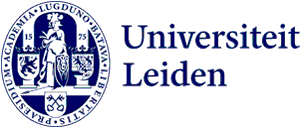
Nobel Prize winner visited Leiden: 'We have hosted a scientific rockstar'
On 28 September the famous chemists Carolyn Bertozzi visited Leiden University to speak at the LED3 seminar. Just one week later, she was announced winner the 2022 Nobel Prize in Chemistry. Leiden chemists Sebastian Pomplun and Hermen Overkleeft are fan: ‘We are extremely honoured to have hosted this scientific rockstar.’ Bertozzi will receive her prize on 10 December.
Nobel Prize research in Leiden
This year's Nobel Prize in Chemistry goes to click chemistry. The Nobel Prize for Physics crowns decades of research into quantum entanglement. Leiden researchers are also fanatically engaged in that field. Read more: Nobel Prize for quantum physics: the circle for Bell's theorem is complete.
When back in 2000 Hermen Overkleeft first saw the Science paper of Carolyn Bertozzi, he felt two things: ‘One, I had wanted to think of that myself and two, now I know what I want to do in my career, now I know what chemical biology means.’ Leiden Professor Hermen Overkleeft was a postdoc at that time and still remembers his immediate fascination. ‘Not that I wanted to do the exact thing myself, but rather how to look at biology as a chemist, and how to gain insight using designed, self-made organic molecules. I have never forgotten that moment, I knew even then that that paper would change the field and one day win a Nobel prize.’

Presenting a new game changer
Overkleeft’s presentiment proved correct: on 5 October 2022, just a week after Bertozzi visited our Faculty, Bertozzi was announced winner of the Nobel Prize in Chemistry. Bertozzi was visiting the Netherlands to receive the Heineken Prize for Biochemistry and Biophysics and luckily had some time to visit and present at the LED 3 seminar (see box).
‘It is impossible to summarise Bertozzi’s incredible portfolio in one talk’, says Sebastian Pomplun, assistant professor at LACDR. ‘She focused on one of her latest discoveries that could become a new game changer in drug development. Bertozzi and her team developed molecules that can bind to disease related proteins outside the cells, and deliver them to specific compartments inside cells, that will degrade these proteins.’
'Click chemistry allows you to click large bio-molecules together like Lego bricks'
A joint achievement
Bertozzi shares the prize with fellow chemists Morten Meldal and Barry Sharpless. Together, they invented and developed the so-called ‘click’ reaction. This is a way to instantly link two large biomolecules. This of sugars, proteins, or nucleic acids. With a click reaction you can click them together like Lego bricks, however you want and without unwanted by-products or interfering with any surrounding molecule. Overkleeft: ‘In short, Sharpless coined the concept of click chemistry and Meldal was the first to execute a click reaction. This elegant and efficient chemical reaction is now widely used for, among others, the development of pharmaceuticals, the mapping of DNA and creating materials that are more fit for purpose.’

Click reactions in living organisms
Bertozzi, however, took click chemistry to a new level. She developed click reactions that work inside living organisms. Her so-called bio-orthogonal reactions take place without disrupting the normal chemistry of the cell. Pomplun: ‘They enable researchers for example to connect specific labels to complex biomolecules that otherwise remain elusive. This allows us to study their locations and movements, even in living organisms.’
Clicking in Leiden
The research at Leiden Science also builds upon Bertozzi’s work. ‘Click chemistry is an essential tool for many projects at LACDR’, says Pomplun. ‘Click reactions are really practical and we use them to quickly prepare many different molecules. For example, complex molecules like proteins, peptides and polymers to create novel types of drugs. Furthermore, we use it to introduce fluorescent labels to biomolecules on cell surfaces to study them.’
‘Here in Leiden, in any case, click chemistry has become indispensable’
Also at the Leiden Institute of Chemistry, click reactions have become indispensable. Overkleeft himself clicks together reporter molecules and enzyme inhibitors to monitor the latter’s activities. ‘But in fact my colleague Sander van Kasteren takes this type of chemistry a step further. He uses clicking to map cellular processes, including dynamic ones, but also uses click-like reactions to decouple certain entities.’
Nobel Prize was inevitable
Pomplum: ‘All scientists that use click chemistry were certain that this incredible technology would soon get a Nobel Prize. We all agree that this game-changing technology deserved the highest recognition!’ Overkleeft agrees: ‘It means this field of science is relevant. The prize encourages scientists to improve on the methodology and look for new and exciting applications - which is what we do at both the LIC and the LACDR.’
Rocking science
For Overkleeft, Bertozzi and her vision are a great example. ‘And she also is a very nice person: after the Leiden lecture, thanks to Sander, we brought Bertozzi and her partner along to a concert of the Indie rock band Arcade Fire. I believe she enjoyed this a lot more than the umpteenth dinner with a bunch of academics.’
Pomplun concludes: ‘We are extremely honoured to have hosted this scientific rockstar and inspiring person at our LED3 seminar. We are looking forward to more great science; maybe there are more future Nobel laureates in our speaker line up?’
